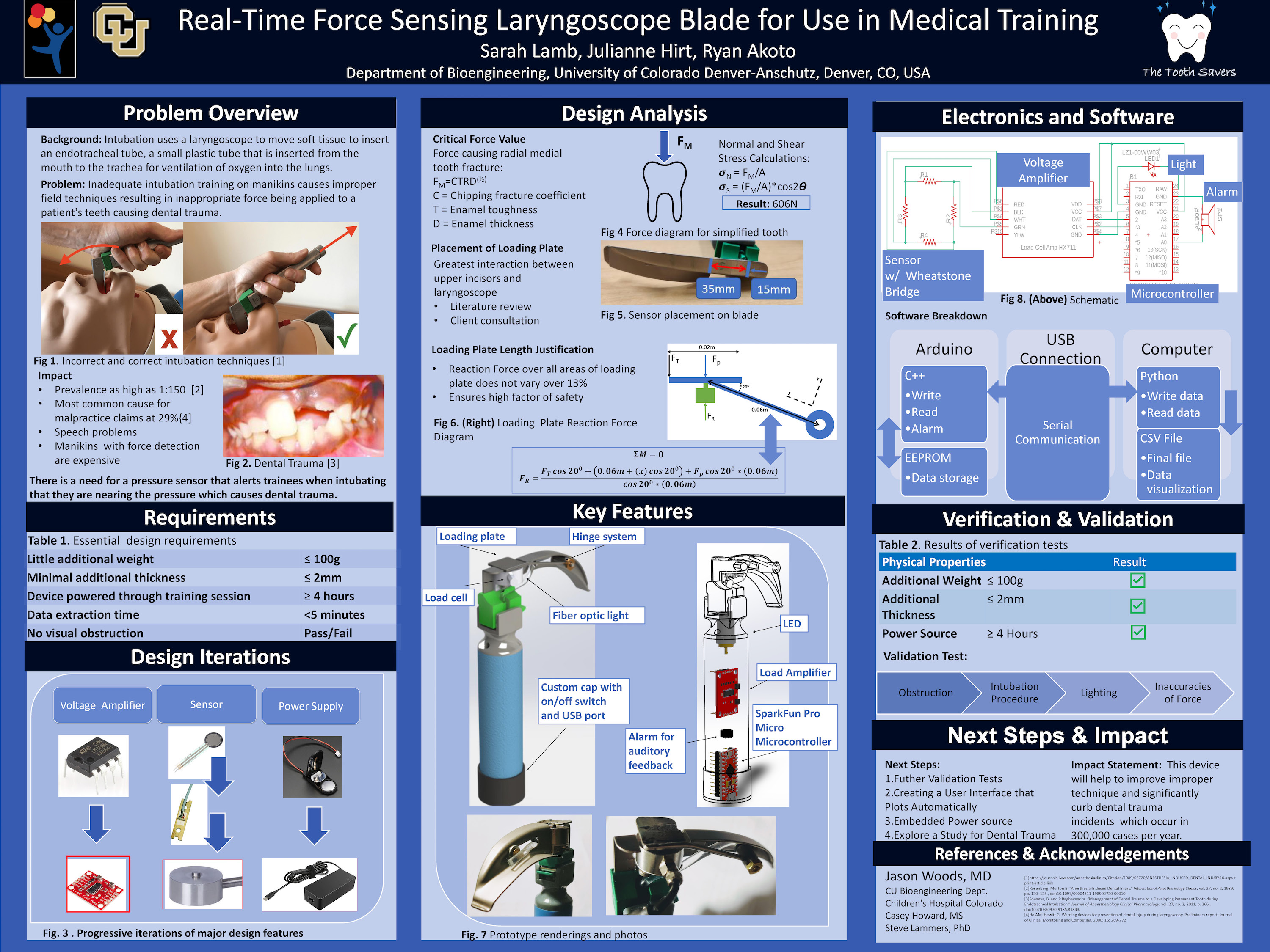Real-Time Force Sensing Laryngoscope Blade for Use in Medical Training
Department of Bioengineering
NOTE: The information on this page has been redacted to preserve potential intellectual property. Sensitive information is not being shared publicly at this time. If you have any questions or would like any additional information on this project please feel free to contact the design course instructors at [email protected] or [email protected].
Project Abstract
During intubation, a laryngoscope is used to lift the epiglottis and expose the trachea. After this, an endotracheal tube is inserted to allow the flow of oxygen, medication, or anesthesia to the lungs. Through this procedure, there is a high risk for damage to the teeth caused by inappropriate force applied by a doctor or trainee. The risk arises from the interactive forces between the laryngoscope and the two upper central teeth. This problem can be prevented with better training practices. Currently, residents are trained in a group with a trainer watching the technique to give subjective feedback to the trainee. There is a need for a device to provide real-time force feedback to the user. Additionally, the client would like to further study these reactive forces creating a need to store and retrieve data. The device will be used at Children’s Hospital Colorado on child-sized (2-year-old) intubation training manikins. The final device needs to have a similarly-sized profile to the currently-used laryngoscope to provide a realistic training environment.
To address this problem a modified laryngoscope blade design was chosen as the ideal solution. This prototype incorporates a force-sensing load cell for accurate measurements. The loading cell is attached to the blade of the laryngoscope by a custom stainless steel bracket that distributes stresses more evenly across the blade. The force is dispersed over a loading plate which is attached to the blade of the laryngoscope via a hinge mechanism. The loading plate placement was optimized through reactive force analysis. An incorporated microcontroller and alarm allow for real-time user feedback when they reach the critical force value causing dental trauma. The values are stored on the microcontroller’s EEPROM. Through a serial connection, the user is able to create CSV files to plot results after training sessions. Ultimately, this ensures that a detailed analysis of intubation training sessions can occur and that both intubation trainees learn correct techniques.
